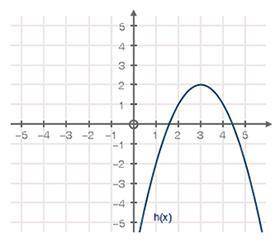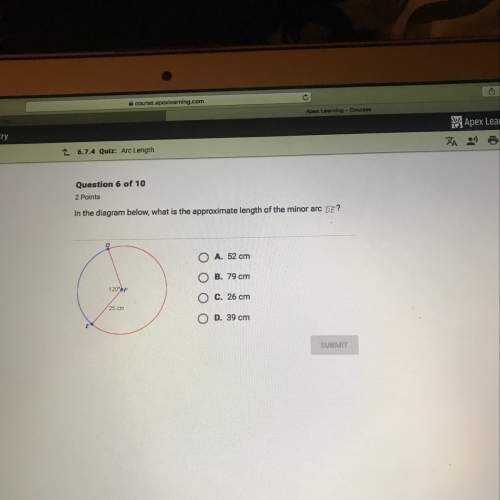
Mathematics, 18.10.2020 15:01 glissman8459
Two functions are given below: f(x) and h(x). State the axis of symmetry for each function and explain how to find it.


Answers: 1
Another question on Mathematics

Mathematics, 21.06.2019 23:30
Determine if the following statement is true or false. the normal curve is symmetric about its​ mean, mu. choose the best answer below. a. the statement is false. the normal curve is not symmetric about its​ mean, because the mean is the balancing point of the graph of the distribution. the median is the point where​ 50% of the area under the distribution is to the left and​ 50% to the right.​ therefore, the normal curve could only be symmetric about its​ median, not about its mean. b. the statement is true. the normal curve is a symmetric distribution with one​ peak, which means the​ mean, median, and mode are all equal.​ therefore, the normal curve is symmetric about the​ mean, mu. c. the statement is false. the mean is the balancing point for the graph of a​ distribution, and​ therefore, it is impossible for any distribution to be symmetric about the mean. d. the statement is true. the mean is the balancing point for the graph of a​ distribution, and​ therefore, all distributions are symmetric about the mean.
Answers: 2

Mathematics, 21.06.2019 23:50
You so much whoever answers with accuracy •the parent function of the graph of f(x) is the square root function, which was reflected across the x-axis. which of the following is the equation of f(x)?
Answers: 1

Mathematics, 22.06.2019 01:30
(01.03 mc) which of the following is a step in simplifying the expression x multiplied by y to the power of 2 over x to the power of negative 3 multiplied by y to the power of 3, the whole to the power of negative 4. select one: a. x to the power of negative 4 multiplied by y to the power of negative 2, the whole over x to the power of negative 7 multiplied by y to the power of negative 1. b. x to the power of negative 4 multiplied by y to the power of negative 8, the whole over x to the power of 12 multiplied by y to the power of negative 12. c. x to the power of negative 4 multiplied by y to the power of negative 8, the whole over x to the power of negative 3 multiplied by y to the power of 3. d. x to the power of negative 4 multiplied by y to the power of negative 2, the whole over x to the power of negative 3 multiplied by y to the power of 3.
Answers: 3

Mathematics, 22.06.2019 01:40
Jeremy wants to determine the number of solutions for the equation below without actually solving the equation.
Answers: 1
You know the right answer?
Two functions are given below: f(x) and h(x). State the axis of symmetry for each function and expla...
Questions

Mathematics, 26.01.2021 09:10


History, 26.01.2021 09:10




English, 26.01.2021 09:10


History, 26.01.2021 09:10

Biology, 26.01.2021 09:10








English, 26.01.2021 09:10


 is the vertical line,
is the vertical line,  .
.


